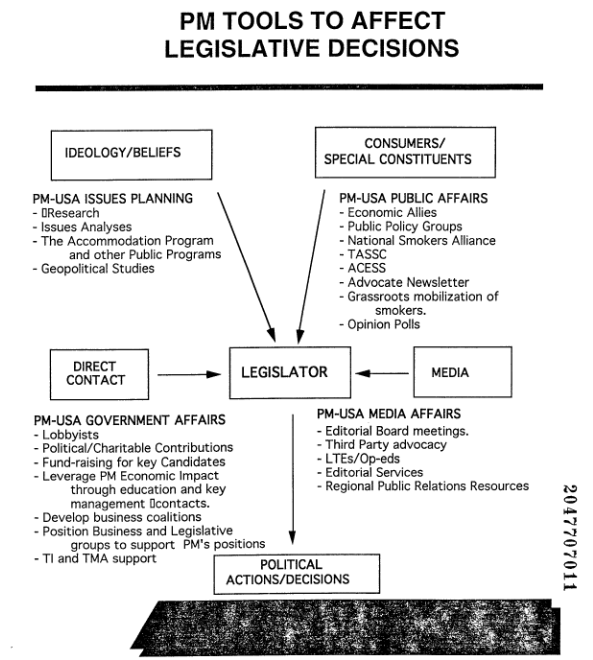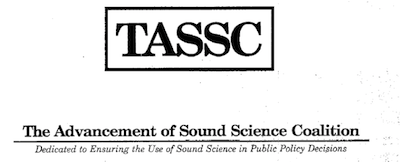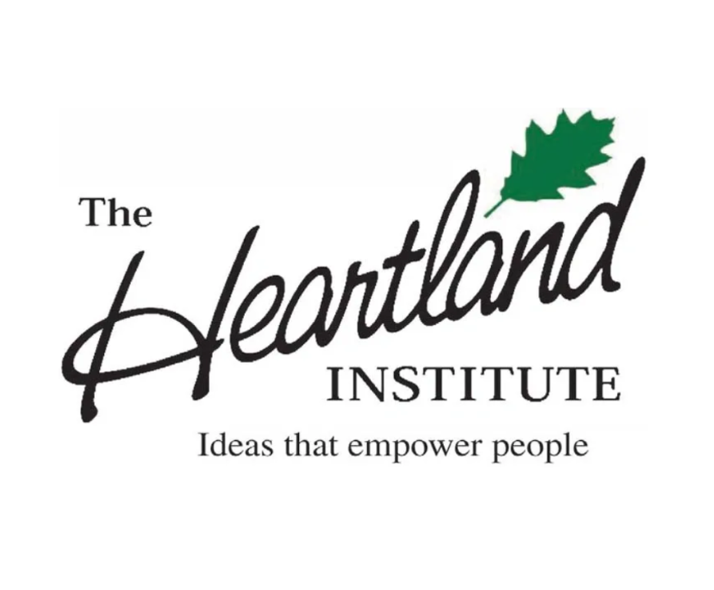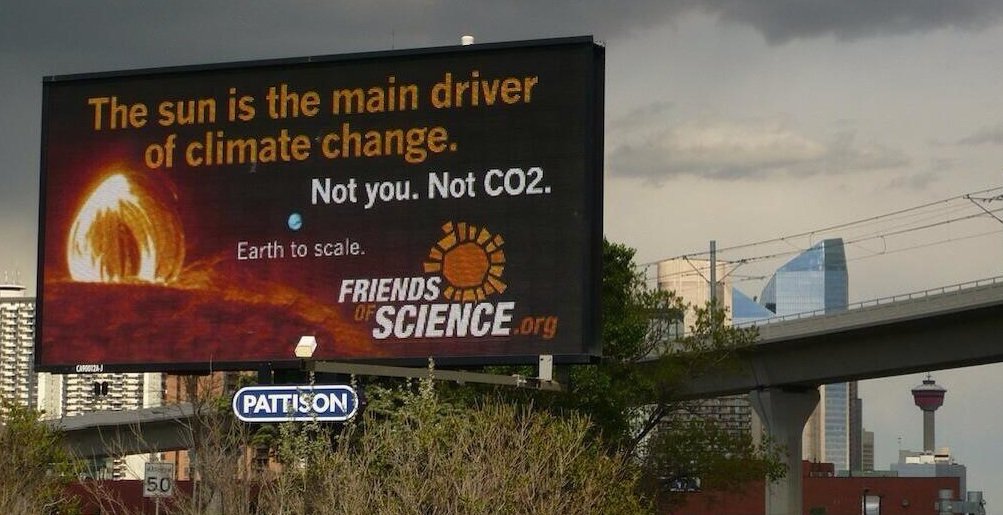The Advancement of Sound Science Coalition (TASSC)
Background
The Advancement of Sound Science Coalition (TASSC) — now defunct — was founded in 1993 to promote what it described as “sound science” in policy decision making. It was initially based on the Washington, DC offices of APCO and Associates, and led by an advisory board of well known “science skeptics” such as Bruce Ames, Hugh Ellsaesser, Patrick Michaels, and Alan Moghissi.1 “The Backlash Industry in Kyoto,” A CLEAR View, December 3, 1997. Archived March 6, 2004. Archived .pdf on file at DeSmog.
TASSC started as a front group for Philip Morris and was attempting to discredit research into Environmental Tobacco Smoke (ETS) as a long-term cause of increased rates of cancer and heart problems in the community.
TASSC was run by the APCO Worldwide public relations firm and worked to try and associate environmentalists with “junk science”.2 Margery Kraus, APCO Associates Untitled Letter (PDF). 6 pp. September 23, 1993. Bates No.2024233677/3682.
The initial plan for launching the TASSC was outlined in a memo from APCO as follows (emphasis added):
“The overall goals of the media plan are to: (i) raise the awareness level of the use of unsound science in public policy decision making among target audiences; (ii) educate publics on the impact of this issue; and (iii) lay the groundwork and provide an environment for a successful grassroots mobilization effort to assist Phillip Morris with its issues nationally and in target states.”3 Revised Plan for the Public Launching of TASSC (Through 1993) (PDF).
According to a 2001 report in the American Journal of Public Health (PDF), Philip Morris created TASSC to help it fight smoking restrictions while minimizing the group’s visible connections to the tobacco industry. TASSC mentioned secondhand smoke among its examples of “unsound, incomplete, or unsubstantiated science.”4 Elisa K. Ong and Stanton A. Glantz. “Constructing ‘Sound Science’ and ‘Good Epidemiology’: Tobacco, Lawyers, and Public Relations Firms,” American Journal of Public Health, Vo.91, No. 11 (November, 2001). Archived .pdf on file at DeSmog.
TASSC was replaced by “The Advancement of Sound Science Center” and ran out of the home of Steve Milloy, before the group was phased out of existence. Steve Milloy runs the website JunkScience.com. TASSC’s website, when operational, described the group as a “not-for-profit organization advocating the use of sound science in public policy decision making.”5 “About TASSC,” TASSC.org. Archived January 12, 1998.
On a January, 1998 archive of their website, TASSC describes “Junk Science” as follows:6 “The Junk Science Home Page,” TASSC, January 7, 1998. Retrieved from Truth Tobacco Industry Documents. Archived .pdf on file at DeSmog. Bates Number : 2081324644-2081324649
“’Junk Science’ is bad science used by: personal injury lawyers to shakedown deep pocket businesses; the ‘food police’ and environmental Chicken Littles to fuel wacky social agendas; power-drunk regulators, cut-throat businesses to attack competitors; and slick politicians and overly ambitious scientists to gain personal fame and fortune.”
A late 1997 CLEAR report on The Advancement of Sound Science Coalition describes Milloy, executive director of TASSC, as a “junk science” critic employed EOP Group, a DC-based lobbying firm that represents the American Crop Protection Association, the Chlorine Chemistry Council, Edison Electric Institute, Fort Howard Corp, Monsanto, and the International Food Additives Council, among others. Milloy’s client list at the OEP Group included Fort Howard Corp (paper), the International Food Additives Association (chemicals), Monsanto (more chemicals), and the National Mining Association.7 “The Backlash Industry in Kyoto,” A CLEAR View, December 3, 1997. Archived March 6, 2004. Archived .pdf on file at DeSmog.
CLEAR reports that TASSC’s early funders included large corporations such as 3M, Amoco, Chevron, Dow Chemical, Exxon, General Motors, Lawrence Livermore National Laboratory, Lorillard Tobacco, Louisiana Chemical Association, National Pest Control Association, Occidental Petroleum, Philip Morris Companies, Procter & Gamble, Santa Fe Pacific Gold, and W.R. Grace.8 “The Backlash Industry in Kyoto,” A CLEAR View, December 3, 1997. Archived March 6, 2004. Archived .pdf on file at DeSmog.
TASSC’s origins as a Philip Morris Astroturf group
Within two months of the EPA publishing its report on the Respiratory Health Effects of Passive Smoking in December, 1992, Philip Morris had created a strategy for dealing with the report, as George Monbiot reports in The Guardian.9 George Monbiot. “The Denial Industry,” The Guardian, September 19, 2006. Archived March 22, 2016. WebCite URL: http://www.webcitation.org/6gDAHCQab
In a February, 1993 memo, the tobacco company’s senior vice president of corporate affairs, Ellen Merlo, sent a letter to William I Campbell, Philip Morris’s chief executive officer and president, explaining: “Our overriding objective is to discredit the EPA report … Concurrently, it is our objective to prevent states and cities, as well as businesses, from passive-smoking bans.”10 George Monbiot. “The Denial Industry,” The Guardian, September 19, 2006. Archived March 22, 2016. WebCite URL: http://www.webcitation.org/6gDAHCQab
To accomplish this, Merlo had hired the public relations company APCO. The PR company warned that “No matter how strong the arguments, industry spokespeople are, in and of themselves, not always credible or appropriate messengers,” reported Monbiot. To get around this, they suggested that PM needed to create the impression of a “grassroots” movement to fight “over regulation.”11 George Monbiot. “The Denial Industry,” The Guardian, September 19, 2006. Archived March 22, 2016. WebCite URL: http://www.webcitation.org/6gDAHCQab
They proposed setting up a “national coalition intended to educate the media, public officials and the public about the dangers of ‘junk science’. Coalition will address credibility of government’s scientific studies, risk-assessment techniques and misuse of tax dollars … Upon formation of Coalition, key leaders will begin media outreach, eg editorial board tours, opinion articles, and brief elected officials in selected states.”12 George Monbiot. “The Denial Industry,” The Guardian, September 19, 2006. Archived March 22, 2016. WebCite URL: http://www.webcitation.org/6gDAHCQab
APCO requested $150,000 for its own fees, and $75,000 for the coalition’s costs to found the group, write mission statements and “prepare and place opinion articles in key markets.”13 George Monbiot. “The Denial Industry,” The Guardian, September 19, 2006. Archived March 22, 2016. WebCite URL: http://www.webcitation.org/6gDAHCQab
A May, 1993 memo from APCO to Philip Morris lists the name of the group as The Advancement of Sound Science Coalition. It was important, further letters stated, “to ensure that TASSC has a diverse group of contributors”; to “link the tobacco issue with other more ‘politically correct’ products”; and to associate scientific studies that cast smoking in a bad light with “broader questions about government research and regulations” – such as “global warming”, “nuclear waste disposal” and “biotechnology.” APCO would engage in the “intensive recruitment of high-profile representatives from business and industry, scientists, public officials, and other individuals interested in promoting the use of sound science”.14 George Monbiot. “The Denial Industry,” The Guardian, September 19, 2006. Archived March 22, 2016. WebCite URL: http://www.webcitation.org/6gDAHCQab
APCO hoped to “establish an image of a national grassroots coalition” for TASSC. This creation of an artificial grassroots movement is now commonly referred to as “astroturfing.” APCO also circulated a sheet of answers, drafted by Philip Morris, to respond to any hostile media inquiries. The first question was:
“Isn’t it true that Philip Morris created TASSC to act as a front group for it?
“A: No, not at all. As a large corporation, PM belongs to many national, regional, and state business, public policy, and legislative organisations. PM has contributed to TASSC, as we have with various groups and corporations across the country.”15 George Monbiot. “The Denial Industry,” The Guardian, September 19, 2006. Archived March 22, 2016. WebCite URL: http://www.webcitation.org/6gDAHCQab
Official Name (Coalition vs. Center)
According to Greenpeace’s ExxonSecrets, The Advancement of Sound Science Center wasthe Coalition’s official IRS name since 1993, the same year the Coalition was founded, and that the Coalition and Center appeared to be effectively the same organization with the same contact information and personnel, and with Steve Milloy being the sole non-administrative employee.
TASSC Stated Purpose & Role
A 1994 document titled “TASSC Facts,” retrieved from public tobacco industry archives16 “TASSC Facts: The Purpose of TASSC,” TASSC, 1995. Retrieved from Truth Tobacco Industry Archives. Archived .pdf on file at DeSmog. Bates No: 2047070900-2047070905. , lays out the purpose and role for TASSC as follows:
“The Advancement of Sound Science Coalition (TASSC) is a not-for-profit coalition advocating the use of sound science in public policy decision making. Its membership includes scientists, academicians, former public officials and representatives from business and industry.
TASSC members believe that science that is used to guide public policy decisions should be based on sound principles – not on emotions or beliefs considered by some as politically acceptable. Too often, public policy decisions that are based on inadequate science impose enormous economic costs and other hardships on consumers, businesses and government. Furthermore, these decisions may fail to protect the public’s health and safety.
TASSC’s Role Is To:
– Define a set of principles to help guide the application and use of good science in public policy.
– Inform public officials, the media and the general public about the consequences of inappropriate science through focusing attention on current examples of unsound government research used to guide policy decisions.
– Establish an educational outreach program to communicate the importance of applying sound scientific standards to public policy decisions and the costs to society resulting from science that is manipulated to achieve political objectives.
– Anticipate when science should be used to help support public policy decisions and offer resources to ensure that sound scientific principles are applied.”
Stance on Climate Change
2006
”[…] the relationship between CO2 and temperature is logarithmic in nature – that is, as CO2 increases in the atmosphere, it absorbs less and less additional energy to produce correspondingly less and less additional warming. At some point, adding more CO2 to the atmosphere doesn’t significantly change atmospheric temperature.”17 “The Greenhouse Myth,” FoxNews.com, April 20, 2006.
1998
TASSC used its website to promote articles that questioned the link between CO2 emissions and dangerous climate change, attacked international attempts to cut emissions and attempted to undermine the science.18 “The Junk Science Home Page,” TASSC, January 7, 1998. Retrieved from Truth Tobacco Industry Documents. Archived .pdf on file at DeSmog. Bates Number : 2081324644-2081324649
Apri, 1998
The following is an excerpt from the 1998 “Global Climate Science Communications Action Plan” that Steven Milloy helped draft:
“Victory Will Be Achieved When
- Average citizens ‘understand’ (recognize) uncertainties in climate science; recognition of uncertainties becomes part of the ‘conventional wisdom’
- Media ‘understands’ (recognizes) uncertainties in climate science
- Media coverage reflects balance on climate science and recognition of the validity of viewpoints that challenge the current ‘conventional wisdom’
- Industry senior leadership understands uncertainties in climate science, making them stronger ambassadors to those who shape climate policy
- Those promoting the Kyoto treaty on the basis of extent science appears to be out of touch with reality.”19 “Draft Global Climate Science Communictions Plan” (PDF), American Petroleum Institute, April 3, 1998. Archived .pdf on file at DeSmog.
Funding
ExxonMobil Funding
According to Greenpeace’s ExxonSecrets, “The Advancement of Sound Science Center, Inc” has received at least $50,000 from ExxonMobil since1998 and $30,000 also went to the “The Advancement of Sound Science Coalition”during the same period.20 ExxonSecrets Factsheet: The Advancement of Sound Science Coalition, TASSC. Accessed March 22, 2016. 21 ExxonSecrets Factsheet: The Advancement of Sound Science Center, Inc. Accessed March 22, 2016.
Other Funding
According to PR Watch, TASSC’s funders include:22 “Thinking Globally, Acting Vocally: The International Conspiracy to Overheat the Earth,” PR Watch, Fourth Quarter 1997, Volume 4, No. 4. Archived June 9, 2013.
- 3M
- Amoco
- Chevron
- Dow Chemical
- ExxonMobil
- General Motors
- Lawrence Livermore National Laboratory
- Lorillard Tobacco
- Louisiana Chemical Association
- National Pest Control Association
- Occidental Petroleum
- Philip Morris Companies
- Procter & Gamble
- Santa Fe Pacific Gold
- W.R. Grace & Co.
Member Contributions
As of 1995, TASSC’s “member contribution plan” was as follows:23 “Memorandum,” APCO Associates Inc., June 9, 1995. Retrieved from Truth Tobacco Industry Documents. Archived .pdf on file at DeSmog. Bates No: 2046106060-2046106062
- $10,000 — Membership on the “Steering Committee”
- $5,000 — Patrons contribution
- $100 — Individuals contribution
Key People
- Steve Milloy — Executive Director.24 “Thinking Globally, Acting Vocally: The International Conspiracy to Overheat the Earth,” PR Watch, Fourth Quarter 1997, Volume 4, No. 4. Archived June 9, 2013.
- Garrey Carruthers — Chairman.25 Rene Romo. “Carruthers led effort backed by tobacco firm,” Albuquerque Journal, May 2, 2014. Archived November 3, 2016. Archive.is URL: https://archive.is/JQvo0
- Thomas Borelli — Secretary.26 Paul D. Thacker. “At Fox News, a Pundit for Hire,” The New Republic, January 27, 2006. Archived July 19, 2006.
- Patrick J. Michaels — Individual “Supporter” of TASSC.27 “Advancement of Sound Science Coalition (TASSC) Supporters List,” June 30, 1993. Bates Number 2024233615/3618.
TASSC Advisory Board
The Advisory Board (archived January, 1998) included:
- Mickey Edwards (Chairman)
- Bruce Ames
- Michael Fumento
- John D. Graham
- Clayton Yeutter
- James Steele
- Lester Lave
- Alice Ottoboni
- Frederick Seitz
- Michael Gough
TASSC Supporters List
According to documents from the Truth Tobacco Industry archive, the following were “supporters” of TASSC as of June, 1993:28 “The Advancement of Sound Science Coalition (TASSC) Supporters List.” Retrieved from Truth Tobacco Industry Documents, Philip Morris records. Bates Number : 2024233615-2024233618. Archived .pdf on file at DeSmog.
| Individual | Company/Organization | City & State |
| Garrey Carruthers | Chairman, TASSC | Albuquerque, NM |
| Jack Adler | Ace Lumber & Millwork Co. | Philadelphia, PA |
| James J . Adler | General Stamping Co. | New Berlin, WI |
| William Adler | Stripmatic Products, Inc. | Cleveland, OH |
| John R. Alongi | Alongi Enterprises | DuQuoin, IL |
| Norman Alworth | Materials Processing Tech., Inc. | Paterson, NJ |
| George Anderson | Uvonics Company | Columbus, OH |
| Terry Applegate | Applegate Insulation Mfg., Inc. | Okemos, MI |
| Joseph C. Arborio | Dutchess Quarry & Supply Co. | Pleasant Valley, NY |
| Wolfgang Arnold | Span-O-Matic, Inc. | Brea, CA |
| Steve Baer | Zomeworks Corporation | Albuquerque, NM |
| John W. Ball | Chicago-Allis Manufacturing | Chicago, II. |
| Patrick Barker | Select Seafood, Inc. | Rockledge, FL |
| James W. Barnett | Exact Machine Co. | Rockford, II. |
| Thomas J. Batcheller | Zip Feed Mills, Inc. | Sioux Falls, SD |
| Bruce Bell | Red Sky Corporation | Albuquerque, NM |
| Joan B. Berkowitz | Farkas Berkowitz & Co. | Washington, DC |
| Darren D . Bianchi | Radiant Color | Richmond, CA |
| E. Bills | Coastal Lumber Co. | Uniontown, PA |
| Wiley E. Bost | Bost Truck Service, Inc. | Murphysboro, IL |
| Hal Bowman | Zema Corporation | Raleigh, NC |
| David Brenner | Columbia University | New York, NY |
| Emmit Brooks | Emmit Brooks Recording Studio | Las Cruces, NM |
| David Brown | Brown Die Casting & Mfg., Inc. | Royse City, TX |
| Zack Burkett, III | Zack Burkett Company | Graham, TX |
| Mitch Cappleman | Bits, Inc. | Columbia, SC |
| James P. Carolus | Hillyard Industries, Inc. | St. Joseph, MO |
| Warren B . Cheston | The Wistar Institute | Philadelphia, PA |
| Kenneth W. Chilton | Individual | St. Louis, MO |
| Peter Clapp | Creative Products Inc. of Rossville | Rossville, II. |
| Bernard L . Cohen | University of Pittsburgh | Pittsburgh, PA |
| Richard Colantuno | Pocono Springs | Richland, PA |
| Jack Conway | Centerline Circuits, Inc. | Longmont, CO |
| Harvey Cormier | Allied Graphics & Design | Albuquerque, NM |
| Geraldine V . Cox | Fluor Daniel, Inc . | Washington, DC |
| Rodney Craig | Coats & Colors, Inc . | Albuquerque, NM |
| Charles V Cummins | Gemmel Pharmacy Group Inc | Ontario CA |
| Patrick F . Daly | The Daly Group Chicago, IL | Chicago, IL |
| Debbie Daniel | D & L Repair, Inc. | Farmington, NM |
| Ron M. Davis | CCL Custom Manufacturing, Inc. | Danville, IL |
| Kevin M. DelGobbo | Technical Coatings Laboratory | Avon, CT |
Actions
April, 1998
Steve Milloy of TASSC contributed to a “Global Climate Science Communications Plan.” A team comprised of members representating prominent industry representatives and think tanks headed the “Global Climate Science Communications Team” with the goal of convincing the public about supposed “uncertainties in climate science.”29 “Global Climate Science Communications Plan (1998),” SourceWatch. Accessed April 6, 2016.
The following is an excerpt from the 1998 memo (PDF):30 “Draft Global Climate Science Communictions Plan” (PDF), American Petroleum Institute, April 3, 1998. Archived .pdf on file at DeSmog.
“Victory Will Be Achieved When
Average citizens ‘understand’ (recognize) uncertainties in climate science; recognition of uncertainties becomes part of the ‘conventional wisdom’
Media ‘understands’ (recognizes) uncertainties in climate science
Media coverage reflects balance on climate science and recognition of the validity of viewpoints that challenge the current ‘conventional wisdom’
Industry senior leadership understands uncertainties in climate science, making them stronger ambassadors to those who shape climate policy
Those promoting the Kyoto treaty on the basis of extent science appears to be out of touch with reality.”
The Communications Team was convened by the American Petroleum Institute, a oil and gas lobbying organization that includes membership by ExxonMobil, Chevron, BP, Shell Oil, ConocoPhillips, and others.
March, 1998
On the night of the Kyoto Conference, TASSC executive director Steven Milloy announced that more than 500 physicians and scientists have signed an open letter to world leaders opposing any climate change treaty.
When asked to provide the signers’ names and credentials, Milloy replied that he had not yet had time to “compile” the “hard copy list.”31 “Thinking Globally, Acting Vocally: The International Conspiracy to Overheat the Earth,” PR Watch, Fourth Quarter 1997, Volume 4, No. 4. Archived June 9, 2013. 32 Rampton, S. & Burton, B. “The PR Plot to Overheat the Earth,” Earth Island Journal (Spring 1998). *No longer available online.
1995
TASSC opposed the EPA’s Ethanol mandate. In their own words:
“The government should not pursue political decisions cloaked in erroneous and unsupported science. The proposed ethanol mandate is bad science, bad for the environment, bad for the American people and, if the government pursues its current course, and overall bad decision.”33 “TASSC Facts: The Purpose of TASSC,” TASSC, 1995. Retrieved from Truth Tobacco Industry Archives. Archived .pdf on file at DeSmog. Bates No: 2047070900-2047070905.
Garrey Carruthers, chairman of TASSC at the time, wrote in Rocky Mountain News:
“Our position backed neither ethanol nor methanol, or other alternative fuels, since we believe there is not enough scientific proof on which to make a decision.34 Garrey Carruthers and Donald Stedman. “Bad Science leads to bad decisions,” Rockey Mountain News, May 26, 1995. Retrieved from Truth Tobacco Industry Documents. Bates Number : 2048389284. Archived .pdf on file at DeSmog.
“Now that the EPA has been pulled back from stretching beyond its jurisdiction and the oil and gas industry has been victorious in insisting that the government not choose sides, the real issues deserves a badly needed closer look.”35 Garrey Carruthers and Donald Stedman. “Bad Science leads to bad decisions,” Rockey Mountain News, May 26, 1995. Retrieved from Truth Tobacco Industry Documents. Bates Number : 2048389284. Archived .pdf on file at DeSmog.
July 26, 1995
According to a TASSC press release, Bruce N. Ames, Senior Advisor to TASSC, described the Environmental Working Group’s study on pesticides in baby foods as “an attempt to scare parents over something that is no threat to their childrens’ health.”
“For more than 80 percent of the pesticides detected, the average dietary exposure of infants is within a factor of three of the adult exposure, sometimes higher, sometimes lower,” Ames said. “It’s curious that this study was issued to coincide with the debate over regulatory reform and risk assessment.”36 (Press Release). “Statement by Dr. Bruce N. Ames on Baby Food Report,” TASSC, July 26, 1995. Retrieved from Truth Tobacco Industry Documents. Archived .pdf on file at DeSmog. Bates No. 2046090589
July 1995
TASSC released a study on media coverage of the Congressional debate over environmental reform, concluding that it “slants ‘clearly against the regulatory revisions.’37 (Press Release). “Media Reports Slanted Against Regulatory Reform Efforts, Study Shows,” TASSC, July 7, 1995. Retrieved from Truth Tobacco Industry Documents. Archived .pdf on file at DeSmog. Bates No. 2048389263-2048389264
“While some outlets refer in favorable terms to the general idea of reform, most devote far greater space and time to denouncing the specific legislation calling for rigorous application of risk and cost benefit analysis,” according to the study.”38 (Press Release). “Media Reports Slanted Against Regulatory Reform Efforts, Study Shows,” TASSC, July 7, 1995. Retrieved from Truth Tobacco Industry Documents. Archived .pdf on file at DeSmog. Bates No. 2048389263-2048389264
April 1995
A memorandum from APCO Associates dated April 28, 1995 details some of TASSC’s activities at the time:39 “TASSC ACTIVITIES: Memorandum,” APCO Associates INC., April 28, 1995. Retrieved from Truth Tobacco Industry Documents. Archived .pdf on file at DeSmog. Bates number: 2048294346-2048294347.
“Following is an update on recent activities of The Advancement of Sound Science Coalition (TASSC). During the past few months, TASSC has actively supported congressional efforts to enact regulatory reform legislation. This has included collaborating with Project Relief, drafting collateral communications materials for use by key members of Congress and helping to coordinate major events to build support for the reform movement. In addition, TASSC is currently:
1. conducting a state and local official outreach program to mobilize support for regulatory reform with policymakers and opinion leaders in key regions ;
2. collecting sound science “horror” and “success” stories from the membership for incorporation into communications materials ; and
3. coordinating production and placement of a series of opinion- editorials on behalf of selected TASSC scientists, state legislators and local officials.
TASSC is planning a two-pronged effort to generate earned media coverage of its mission, members and activities. In the near-term, TASSC will commission and disseminate a comprehensive review of the media coverage surrounding the regulatory reform effort. (Our initial assessment has revealed that during the first 100 days of the 104th Congress anti-reform editorial commentary has significantly outnumbered pro-reform pieces.)
In the mid-term, TASSC will commission a broader study that will likely focus on popular media portrayal of environmental issues and its impact on public opinion . In addition, TASSC is revising its Model Sound Science and Public Policy Act (see attached draft). Once finalized, we plan to disseminate and actively build support for the new version of the model bill with member and non-member legislators prior to the 1996 legislative sessions.”
The Advancement of Sound Science Coalition Contact & Location
The Advancement of Sound Science Coalition’s address was listed as follows, according to documents retrieved from the Truth Tobacco Industry Archives:40 “TASSC Facts: The Purpose of TASSC,” TASSC, 1995. Retrieved from Truth Tobacco Industry Archives. Archived .pdf on file at DeSmog. Bates No: 2047070900-2047070905.
The Advancement of Sound Science Coalition
P.O. Box 18432,
Washington, D.C. 20036
(800) 369-6608
Related Organizations
Phillip Morris
A 1994 Phillip Morris memo lists TASSC as one of its “Tools to Affect Legislative Decisions” (see screencap below).41 “CORE OBJECTIVES,” October, 1993 (p. 11). Retrieved from Truth Tobacco Industry Documents. Archived .pdf on file at DeSmog. Bates Number: 2047707000-2047707019

A search of the publicly available tobacco industry archives returns over 500 results for “TASSC,” “The Advancement of Sound Science Coalition” and The Advancement of Sound Science Center.”
Junkscience.com
According to SourceWatch, the same phone number and address are on record for Citizens for the Integrity of Science, Junkscience.com, NoMoresScares.com, and The Advancement of Sound Science Coalition.42 “The Advancement of Sound Science Coalition,” SourceWatch Profile.
Other Resources
- ExxonSecrets Factsheet: JunkScience.com.
- “Advancement of Sound Science Center,” Wikipedia Entry.
- “THE ADVANCEMENT OF SOUND SCIENCE COALITION [defunct],” Integrity in Science.
- Sheldon Rampton and John Stauber. “How Big Tobacco Helped Create ‘the Junkman’,” PR Watch, Q3 2000. Archived June 9, 2013.
Resources
- 1“The Backlash Industry in Kyoto,” A CLEAR View, December 3, 1997. Archived March 6, 2004. Archived .pdf on file at DeSmog.
- 2Margery Kraus, APCO Associates Untitled Letter (PDF). 6 pp. September 23, 1993. Bates No.2024233677/3682.
- 3Revised Plan for the Public Launching of TASSC (Through 1993) (PDF).
- 4Elisa K. Ong and Stanton A. Glantz. “Constructing ‘Sound Science’ and ‘Good Epidemiology’: Tobacco, Lawyers, and Public Relations Firms,” American Journal of Public Health, Vo.91, No. 11 (November, 2001). Archived .pdf on file at DeSmog.
- 5“About TASSC,” TASSC.org. Archived January 12, 1998.
- 6“The Junk Science Home Page,” TASSC, January 7, 1998. Retrieved from Truth Tobacco Industry Documents. Archived .pdf on file at DeSmog. Bates Number : 2081324644-2081324649
- 7“The Backlash Industry in Kyoto,” A CLEAR View, December 3, 1997. Archived March 6, 2004. Archived .pdf on file at DeSmog.
- 8“The Backlash Industry in Kyoto,” A CLEAR View, December 3, 1997. Archived March 6, 2004. Archived .pdf on file at DeSmog.
- 9George Monbiot. “The Denial Industry,” The Guardian, September 19, 2006. Archived March 22, 2016. WebCite URL: http://www.webcitation.org/6gDAHCQab
- 10George Monbiot. “The Denial Industry,” The Guardian, September 19, 2006. Archived March 22, 2016. WebCite URL: http://www.webcitation.org/6gDAHCQab
- 11George Monbiot. “The Denial Industry,” The Guardian, September 19, 2006. Archived March 22, 2016. WebCite URL: http://www.webcitation.org/6gDAHCQab
- 12George Monbiot. “The Denial Industry,” The Guardian, September 19, 2006. Archived March 22, 2016. WebCite URL: http://www.webcitation.org/6gDAHCQab
- 13George Monbiot. “The Denial Industry,” The Guardian, September 19, 2006. Archived March 22, 2016. WebCite URL: http://www.webcitation.org/6gDAHCQab
- 14George Monbiot. “The Denial Industry,” The Guardian, September 19, 2006. Archived March 22, 2016. WebCite URL: http://www.webcitation.org/6gDAHCQab
- 15George Monbiot. “The Denial Industry,” The Guardian, September 19, 2006. Archived March 22, 2016. WebCite URL: http://www.webcitation.org/6gDAHCQab
- 16“TASSC Facts: The Purpose of TASSC,” TASSC, 1995. Retrieved from Truth Tobacco Industry Archives. Archived .pdf on file at DeSmog. Bates No: 2047070900-2047070905.
- 17“The Greenhouse Myth,” FoxNews.com, April 20, 2006.
- 18“The Junk Science Home Page,” TASSC, January 7, 1998. Retrieved from Truth Tobacco Industry Documents. Archived .pdf on file at DeSmog. Bates Number : 2081324644-2081324649
- 19“Draft Global Climate Science Communictions Plan” (PDF), American Petroleum Institute, April 3, 1998. Archived .pdf on file at DeSmog.
- 20ExxonSecrets Factsheet: The Advancement of Sound Science Coalition, TASSC. Accessed March 22, 2016.
- 21ExxonSecrets Factsheet: The Advancement of Sound Science Center, Inc. Accessed March 22, 2016.
- 22“Thinking Globally, Acting Vocally: The International Conspiracy to Overheat the Earth,” PR Watch, Fourth Quarter 1997, Volume 4, No. 4. Archived June 9, 2013.
- 23“Memorandum,” APCO Associates Inc., June 9, 1995. Retrieved from Truth Tobacco Industry Documents. Archived .pdf on file at DeSmog. Bates No: 2046106060-2046106062
- 24“Thinking Globally, Acting Vocally: The International Conspiracy to Overheat the Earth,” PR Watch, Fourth Quarter 1997, Volume 4, No. 4. Archived June 9, 2013.
- 25Rene Romo. “Carruthers led effort backed by tobacco firm,” Albuquerque Journal, May 2, 2014. Archived November 3, 2016. Archive.is URL: https://archive.is/JQvo0
- 26Paul D. Thacker. “At Fox News, a Pundit for Hire,” The New Republic, January 27, 2006. Archived July 19, 2006.
- 27“Advancement of Sound Science Coalition (TASSC) Supporters List,” June 30, 1993. Bates Number 2024233615/3618.
- 28“The Advancement of Sound Science Coalition (TASSC) Supporters List.” Retrieved from Truth Tobacco Industry Documents, Philip Morris records. Bates Number : 2024233615-2024233618. Archived .pdf on file at DeSmog.
- 29“Global Climate Science Communications Plan (1998),” SourceWatch. Accessed April 6, 2016.
- 30“Draft Global Climate Science Communictions Plan” (PDF), American Petroleum Institute, April 3, 1998. Archived .pdf on file at DeSmog.
- 31“Thinking Globally, Acting Vocally: The International Conspiracy to Overheat the Earth,” PR Watch, Fourth Quarter 1997, Volume 4, No. 4. Archived June 9, 2013.
- 32Rampton, S. & Burton, B. “The PR Plot to Overheat the Earth,” Earth Island Journal (Spring 1998). *No longer available online.
- 33“TASSC Facts: The Purpose of TASSC,” TASSC, 1995. Retrieved from Truth Tobacco Industry Archives. Archived .pdf on file at DeSmog. Bates No: 2047070900-2047070905.
- 34Garrey Carruthers and Donald Stedman. “Bad Science leads to bad decisions,” Rockey Mountain News, May 26, 1995. Retrieved from Truth Tobacco Industry Documents. Bates Number : 2048389284. Archived .pdf on file at DeSmog.
- 35Garrey Carruthers and Donald Stedman. “Bad Science leads to bad decisions,” Rockey Mountain News, May 26, 1995. Retrieved from Truth Tobacco Industry Documents. Bates Number : 2048389284. Archived .pdf on file at DeSmog.
- 36(Press Release). “Statement by Dr. Bruce N. Ames on Baby Food Report,” TASSC, July 26, 1995. Retrieved from Truth Tobacco Industry Documents. Archived .pdf on file at DeSmog. Bates No. 2046090589
- 37(Press Release). “Media Reports Slanted Against Regulatory Reform Efforts, Study Shows,” TASSC, July 7, 1995. Retrieved from Truth Tobacco Industry Documents. Archived .pdf on file at DeSmog. Bates No. 2048389263-2048389264
- 38(Press Release). “Media Reports Slanted Against Regulatory Reform Efforts, Study Shows,” TASSC, July 7, 1995. Retrieved from Truth Tobacco Industry Documents. Archived .pdf on file at DeSmog. Bates No. 2048389263-2048389264
- 39“TASSC ACTIVITIES: Memorandum,” APCO Associates INC., April 28, 1995. Retrieved from Truth Tobacco Industry Documents. Archived .pdf on file at DeSmog. Bates number: 2048294346-2048294347.
- 40“TASSC Facts: The Purpose of TASSC,” TASSC, 1995. Retrieved from Truth Tobacco Industry Archives. Archived .pdf on file at DeSmog. Bates No: 2047070900-2047070905.
- 41“CORE OBJECTIVES,” October, 1993 (p. 11). Retrieved from Truth Tobacco Industry Documents. Archived .pdf on file at DeSmog. Bates Number: 2047707000-2047707019
- 42“The Advancement of Sound Science Coalition,” SourceWatch Profile.






